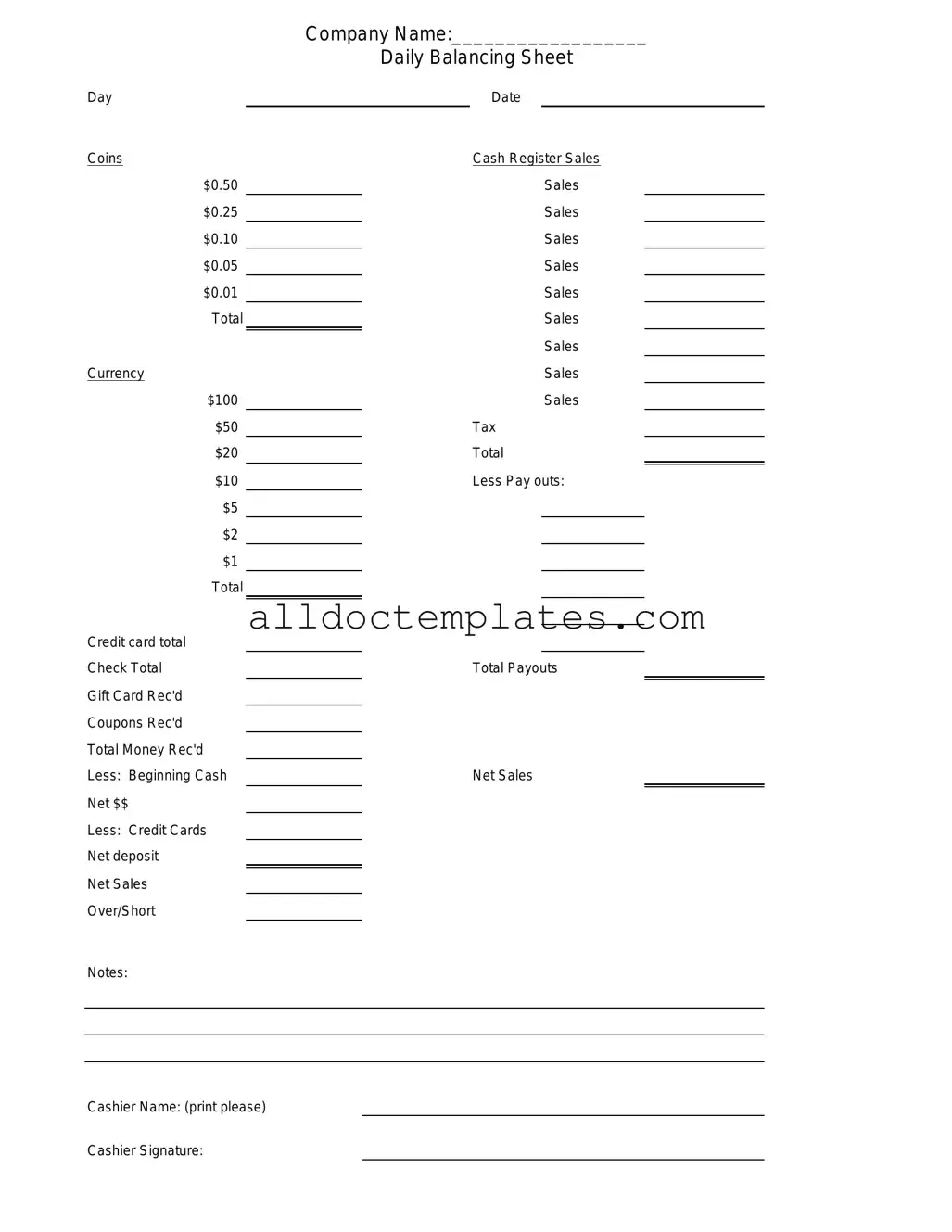Fill in a Valid Cash Drawer Count Sheet Form
The Cash Drawer Count Sheet is a financial document used by businesses to accurately track the cash held in a cash drawer at the end of a shift or business day. This form helps ensure that the amount of cash matches the recorded sales, providing a clear overview of cash flow and assisting in identifying any discrepancies. By maintaining this record, businesses can promote accountability and streamline their financial operations.
Get Your Form Now

